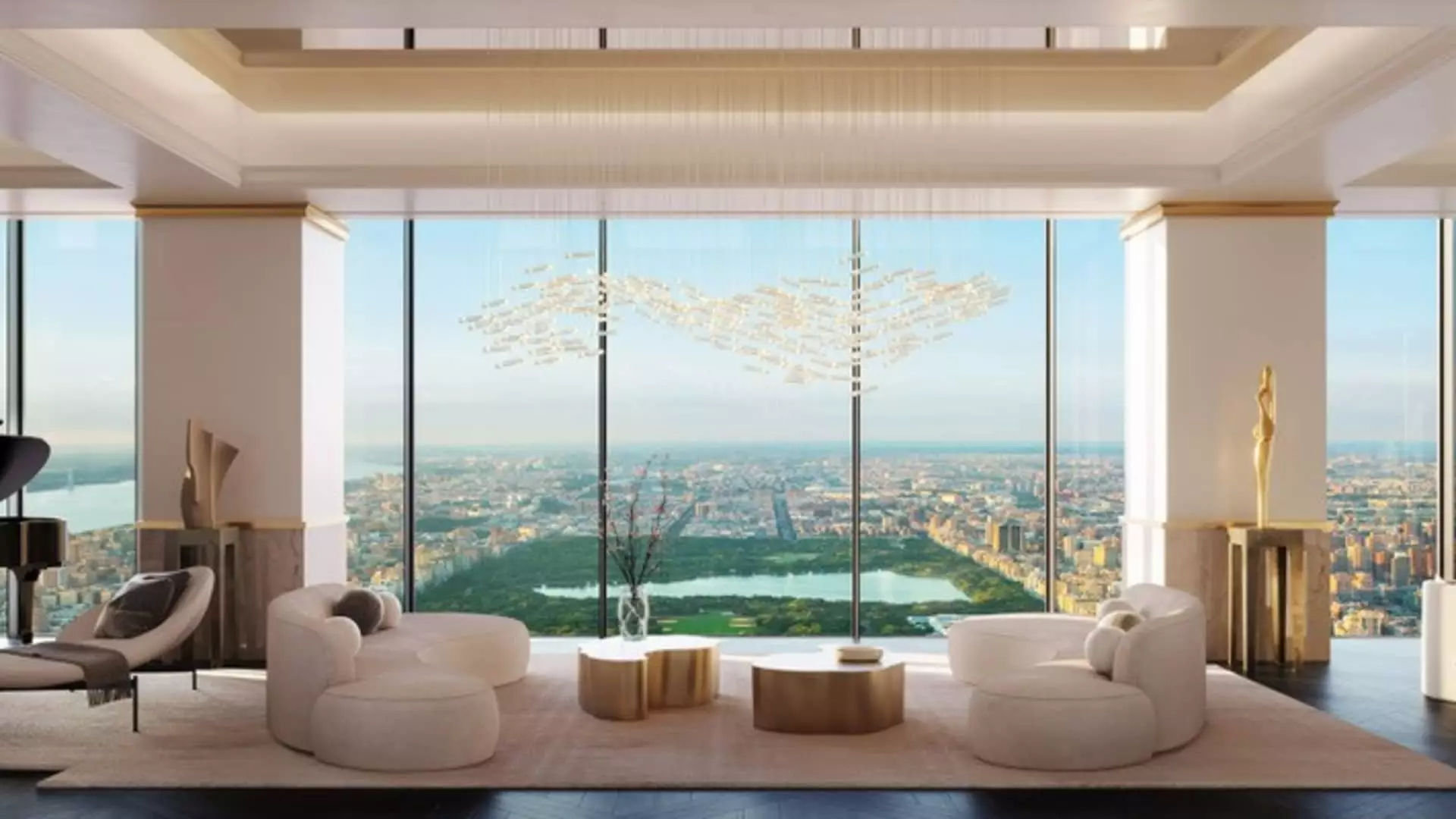110 Million Reasons: The Ups and Downs of New York’s Luxury Real Estate Market

As the financial markets spiral into uncertainty—evidenced by the Dow Jones Industrial Average’s drastic fluctuations—the world above the bustling streets of Manhattan continues to pulse with life, especially in the realm of ultra-luxury real estate. A staggering $110 million penthouse has recently caught the public eye, firmly placing itself as the most opulent property for sale in New York City. This eye-popping listing debuted amid one of Wall Street’s darkest weeks, as investors grappled with tumultuous market shifts due to tariff discussions and other economic uncertainties. In a time when most homeowners are pinching pennies and holding their breath about financial prospects, one segment of buyers remains unshaken: the ultra-wealthy.
For broker Nikki Field of Sotheby’s International Realty, this elite clientele is impervious to daily market vicissitudes. “These buyers are not reacting to headlines or fluctuations,” she asserts, highlighting a jet-set approach to investment that prioritizes the acquisition of extraordinary assets like high-end real estate over conventional stock exchanges. However, what does this say about the disconnection between global markets and the tastes of the ultra-rich? It creates a striking dichotomy that is hard to ignore, establishing an almost surreal aspect of luxury living during financial turbulence.
Architectural Ambition: The Hope of the Quadplex
The penthouse complex in question is not merely a lavish suite with a balcony view; it is an architectural marvel, potentially adaptable into a quadplex encompassing 11,480 square feet on the roof of the famed Steinway Tower. Spanning the tower’s top levels, this combined offering boasts five bedrooms and multiple lounges—essentially a house in the sky, customized for the tastes of the elite. While Field describes the architectural potential that lies within this property, one can’t help but wonder: Are these mega-properties a reflection of actual worth, or are they inflated by mere aspiration and ambition?
The truth is that, for many high-net-worth individuals, real estate represents more than just a roof over their heads; it’s a strategic pivot away from the unpredictable stock market. The sheer size and exclusivity of such listings speak volumes about prevailing strategies during economic uncertainty. The duality of looming financial strife and the growing demand for lavish properties indicates an intriguing penchant of the rich: they seek solid assets in a world of monetary fluidity, echoing the philosophy of tangible wealth.
Luxury Dynamics: Do the Rules Still Apply?
Historically, nine-figure listings appeared to be little more than publicity stunts, yet recent trends reveal this perception may be changing. Real estate analyst Jonathan Miller notes that home sales exceeding $100 million are no longer an anomaly, averaging about four per year as of late. This evolving landscape begs the question: Are we witnessing a transformation in the luxury market, or merely an outlier effect tied to a handful of exceptionally wealthy individuals?
While those in the ultra-prime sector seem unaffected by market swings, the broader landscape dazzles with discontent. There’s a palpable sense of anxiety among luxury real estate brokers, as more buyers are hesitating at the negotiation table. “The lack of a clear strategy on tariffs has created economic uncertainty,” Miller elaborates, highlighting the volatile environment influencing decisions among even the wealthiest buyers. The economic interplays suggest that the luxury market is not immune to financial currents; instead, it is experiencing a litmus test of sorts—leading to a divergence between those who are willing to invest and those who falter at the thought of economic instability.
A Buyer’s Market: Strategy Over Speculation
Despite the precarious nature of market sentiment, there are emerging signs of resilience at the high end. Data indicates that contracts for homes priced at $4 million and above are on the rise, signaling that there is still an appetite for luxury living among a discerning clientele. Yet, these high-net-worth individuals are pivoting from impulsive buys to a more calculated approach. They are favoring all-cash offers and negotiating terms that leave plenty of room for flexibility.
This cautious behavior isn’t just evident in New York; it permeates across luxury markets nationwide. In unprecedented times, the disparity between buyers and sellers has grown. Buyers are diving deep into research, comparing values meticulously and negotiating fearlessly. Sellers, on the other hand, still cling to past price points as if they’re sacred relics, leading to stalled negotiations and diminishing deals. This impasse has essentially created a standoff, where the ability to adapt becomes critical for both parties.
The high-end market is not in freefall; it’s transforming. Sellers are beginning to make concessions quietly, veering away from published price cuts while retaining an image of exclusivity. In a complex market, understanding shifts and adapting to the new buyer mentality becomes essential for survival. For those in the ultra-luxury segment, navigating this new landscape is less about monetary worth and more about understanding lifestyle needs.
In today’s uncertain economic climate, where the rungs on the wealth ladder are perceived as more slippery than before, the pursuit of wealth takes on new dimensions. The signs may suggest volatility, but the high-end sector continues to dig its heels in, finding opportunities amongst adversity.





